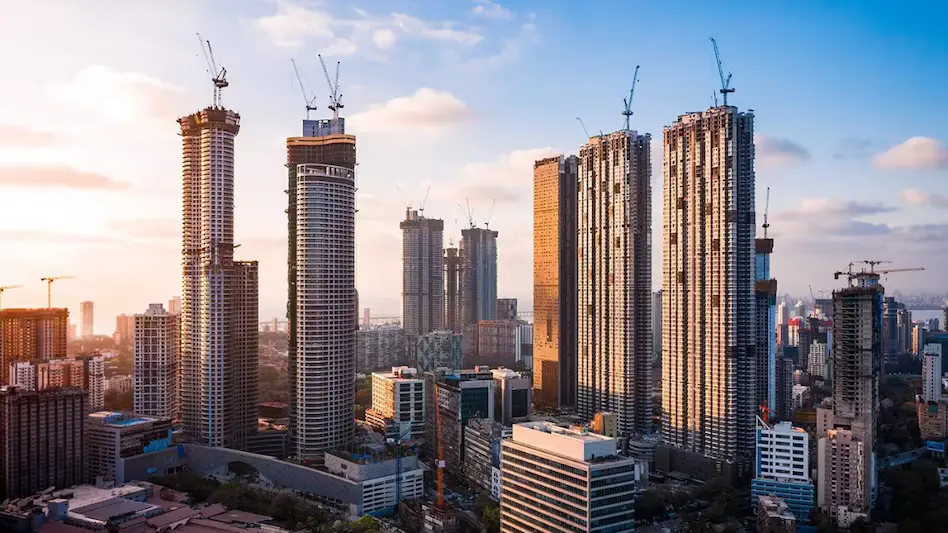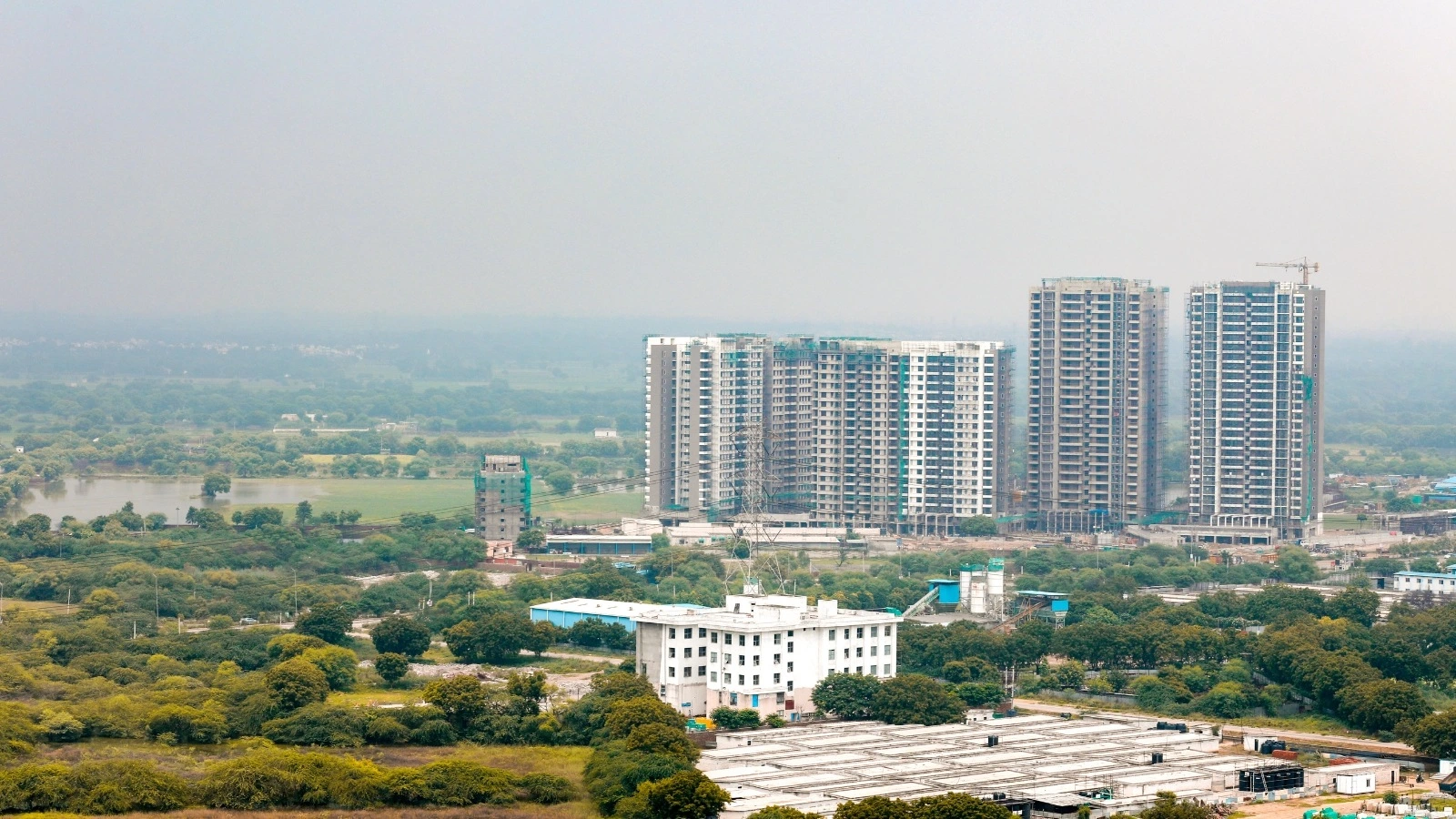Table of Content
As India’s real estate sector evolves into a mature, institutional asset class, a silent revolution is underway the rise of India’s REIT market. According to the latest Knight Frank India–Confederation of Indian Industry (CII) report, the market value of Real Estate Investment Trust (REIT)-eligible assets is projected to grow from ₹10.4 trillion in 2025 to an impressive ₹19.7 trillion by 2030.
The surge will be powered by three major engines office, retail, and warehousing supported by strong occupancy levels, favourable policies, and an expanding investor base. As India’s economy heads toward the $7 trillion mark, commercial real estate (CRE) will play a central role in driving productivity and long-term capital formation.
Current Landscape: Where India’s REIT Market Stands
Over the past five years, India’s REIT market has transformed from a niche investment vehicle into a mainstream real estate asset class. Yet, the numbers reveal vast untapped potential.
Office REITs currently account for only 15.3% of total Grade A office stock across the top eight Indian cities. In value terms, REIT-able office assets are worth around ₹8.2 trillion in 2025, a figure expected to double to ₹16 trillion by 2030 nearly.
This rapid institutionalization has been supported by greater transparency, stable rental yields, and rising demand for premium office spaces by Global Capability Centres (GCCs) and technology firms.
Also Read: Uttar Pradesh Govt Allows Noida Authority’s Nod for Extra FAR in Sector 107 Project
Key Drivers of Growth
1. Office REITs Lead the Charge
The office segment continues to dominate India’s REIT market. With over 1 billion sq. ft of operational stock valued at approximately ₹16.4 trillion, India now ranks among the world’s top four office markets.
Driven by demand for sustainable, high-quality workspaces, institutional investors are increasingly betting on Grade A business parks in Bengaluru, Hyderabad, Pune, and Gurugram. The Knight Frank CII report suggests that this segment alone could account for nearly 80% of future REIT expansion.
2. Retail REITs: The Next Big Bet
Retail REITs are emerging as India’s next major real estate opportunity. Out of 66 million sq. ft of Grade A retail stock nationwide, only 7.3 million sq. ft is currently under REIT structures. The value of REIT-able retail assets is forecast to grow from ₹1.5 trillion in 2025 to ₹2.4 trillion by 2030.
This expansion reflects India’s booming organised retail consumption, which is expected to touch ₹8.8 trillion in FY2025, led by shopping malls, high streets, and transit-linked formats. Categories like apparel and food & beverages dominate, contributing over half of all mall and high-street sales.
According to Viral Desai, Senior Executive Director, Knight Frank India, “Retail REITs are becoming an important vehicle for investors to tap into India’s consumption-driven growth. Experience-led retailing and sustainability-focused developments are defining the next phase of evolution.”
3. Warehousing, Industrial, and Data Centre REITs
Warehousing has become one of the fastest-growing CRE segments in the country, driven by e-commerce and third-party logistics (3PL). The top eight warehousing markets collectively hold about 220.9 million sq. ft of Grade A stock. Leasing activity in just the first half of 2025 reached 32.1 million sq. ft, signalling massive investor appetite.
The total value of warehousing and industrial REIT/InvIT assets is projected to expand from ₹0.7 trillion in 2025 to ₹1.3 trillion by 2030. Many of these assets are now ESG-compliant and technology-enabled, making them attractive to long-term global capital.
Another high-potential segment is data centres, now recognised as India’s fastest-growing commercial real estate category. With total installed capacity surpassing 10 GW (1.4 GW operational and 8.8 GW under development), this space is being fuelled by AI adoption, 5G rollout, and the government’s data-localization policies.
Projected Growth Across REIT Segments (2025–2030)
|
Segment |
Value 2025 (₹ Trillion) |
Value 2030 (₹ Trillion) |
Growth (%) |
|
Office REIT-able assets |
8.2 |
16.0 |
+95 % |
|
Retail REIT-able assets |
1.5 |
2.4 |
+60 % |
|
Warehousing & Industrial |
0.7 |
1.3 |
+85 % |
|
Total REIT Market Value |
10.4 |
19.7 |
+89 % |
Why This Matters: The Broader Economic Impact
The expansion of India’s REIT market is more than a real estate story it’s an economic milestone.
For developers, REITs enable monetization of completed assets and recycling of capital into new projects.
For investors, they offer access to steady, inflation-hedged returns with liquidity similar to equities.
For the government, the formalisation of CRE through REITs improves transparency, enhances tax collection, and attracts foreign institutional investment.
Shishir Baijal, Chairman & MD, Knight Frank India, notes: “As India heads toward a $7 trillion economy, commercial real estate will be central to powering productivity, attracting capital, and building next-generation urban centres.”
Challenges That Could Reshape the Trajectory
While the outlook remains bullish, several structural and policy-level challenges must be addressed to ensure sustainable growth.
- Limited quality supply: India still faces a gap in Grade A office and warehousing stock suitable for REIT structures.
- Regulatory clarity: Taxation on dividend distribution and cross-border investor participation needs simplification.
- Liquidity constraints: Smaller investors need better access mechanisms and education about REIT benefits.
Addressing these issues will determine how effectively India’s REIT market can capture institutional capital at scale.
Also Read: Ashiana Housing Expands Its Senior Living Portfolio in Chennai
The Next Phase: Diversification and ESG-Led Growth
The next frontier for India’s REIT market will be diversification. Beyond offices and malls, new asset classes such as industrial parks, logistics hubs, hospitality portfolios, and data centres are emerging as strong candidates for REIT structures.
Sustainability will also play a defining role. Global investors are increasingly focusing on green buildings and ESG compliance as a precondition for funding. This will push Indian developers to integrate sustainability metrics into their design, construction, and asset-management processes.
As Knight Frank’s Viral Desai points out, “India’s CRE has moved from promise to performance. The next focus must be on quality supply, sustainability, and global-standard asset management.”
Conclusion
The coming decade marks a pivotal moment for India’s REIT market. With its value expected to almost double by 2030, the country is on track to build one of the most dynamic and diversified REIT ecosystems in Asia.
Institutional capital, policy stability, and growing investor confidence will continue to propel this transformation. As developers, fund managers, and policymakers align on transparency and innovation, India’s commercial real estate sector is poised to become a global benchmark in scale and governance.
For long-term investors seeking steady yields and exposure to India’s growth story, India’s REIT market stands as one of the most promising frontiers of opportunity in the decade ahead.








Ans 1. As of 2025, the total value of REIT-eligible assets in India stands at ₹10.4 trillion, with office assets accounting for the largest share.
Ans 2. India’s REIT market is projected to reach ₹19.7 trillion by 2030, driven by growth in office, retail, and warehousing segments.
Ans 3. The office segment dominates, contributing nearly 80% of future REIT expansion, especially in cities like Bengaluru, Hyderabad, Pune, and Gurugram.
Ans 4. Retail REITs are expanding alongside India’s organised retail boom, with REIT-able retail assets expected to grow from ₹1.5 trillion in 2025 to ₹2.4 trillion by 2030.
Ans 5. Yes, warehousing and industrial REITs are growing rapidly due to e-commerce, logistics demand, and technology-enabled operations, with asset values expected to double by 2030.
Ans 6. Data centres are a fastest-growing commercial real estate segment, driven by AI adoption, 5G rollout, and data-localization policies, and are poised to be a key REIT asset class.
Ans 7. REITs offer steady, inflation-hedged returns, liquidity similar to equities, and exposure to India’s growing commercial real estate ecosystem.
Ans 8. Challenges include limited Grade A supply, regulatory clarity for cross-border investments, taxation issues, and the need to improve access for smaller investors.
Ans 9. REIT growth recycles developer capital, formalises commercial real estate, boosts tax collection, and attracts institutional investment, contributing to urban productivity.
Ans 10. Future growth will focus on diversification into logistics, industrial parks, and data centres, alongside ESG-compliant, sustainable developments to attract global capital.